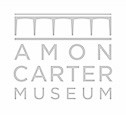
by Vicente Fernández, July 07, 2017

by Vicente Fernández, July 07, 2017

Black Powder — Damion Berger
by Ana Belén, 17 October, 2016
“Grand in both size and scale, these images are made using in-camera techniques such as long and overlapping exposures and unorthodox combinations of focus and aperture to select, sculpt and multiply the explosions onto a single sheet of film. They are printed back as negatives by making facsimile enlargements of the exposed film.”
“WHAT IS BLACK IS EQUALLY IMPORTANT AS WHAT IS WHITE.”

Soaking up New York City’s pools and beaches
by Max Campbell, July 1, 2016
“Currently on display, not far from a displaced carousel horse and around the corner from a landing wallpapered with Employee of the Month plaques, is “SPF16: NYC Pools and Beaches in Contemporary Photography,” a collection of photographs from all five boroughs, made in the past thirty or so years by the acclaimed photographers Juliana Beasley, Damion Berger, Rona Chang, Bruce Davidson, Tobias Hutzler, Bruce Katz, Michael Kirby Smith, Wayne Lawrence, Greg Miller, Christine Osinski, Thomas Roma, and Lauren Welles.“

Experiments in photography push the envelope and reference the classics at Heckscher
by DREW MOSS, November 21, 2014
“…Damion Berger’s “Fiac I, Jardin des Tuileries” is just this kind of visual reinvention. Using inverted exposure and stark primary contrast, he recreates the Parisian landmark as a monolithic jungle gym of sparks and arcs where fountains turn to fireworks and trees explode in a cold, neon negative space. The power here is Berger’s reinvention of a known entity. He’s taken a recognizable place and not only made it his own, but also made it new for anyone who sees his version. It’s not unlike a cover of a great song: The chords and the words stay the same, but it has a perspective all its own.”

Top Ten: AIPAD Photography Show
by TRACY ZWICK, April 5, 2013
“British photographer Damion Berger’s pictures call to mind British painter John Virtue’s. There are no people in these images; they are populated with energy. Printed as negatives, Berger’s large night photographs offer semi-abstract takes on fireworks in a style that’s chalky, gritty and glorious.”

AIPAD 2013 at The Armory
by PEGGY ROALF, April 4, 2013
The theme for my visit quickly took shape on seeing Damion Berger’s series, Black Powder, a solo presentation at Lisa Sette Gallery, Scottsdale (above). Berger’s black-and-white images of fireworks celebrations around the world are created in a large-format camera, and printed on large sheets. Their ghostly quality, veering between positive and negative, come from multiple exposures and in-camera manipulations.

Des feux d’artifices, en un peu moins chiant
by Marie Fantozzi, October 27, 2016
“Il n’y a pas plus banal qu’une photo de feu d’artifice. Pire, un tel cliché ne semble bon qu’à figurer, au mieux, sur une carte postale de vacances un peu kitsch, au pire, dans les pages de la PQR un lendemain de 14 juillet. Pourtant, un photographe anglais, Damion Berger, a complètement renouvelé le genre avec une méthode toute simple : en ne gardant de ses prises de vue que le négatif. Les résultats, compilés dans une série intitulée Black Powder, donnent lieu à des compositions monochromes très graphiques, qui nous font à nouveau aimer ces spectacles populaires au charme désuet.”

The Most Stunning Photos of Fireworks Don’t Have a Lick of Color
by Laura Mallonee, July 4, 2016
“Every other photo of fireworks looks pretty much the same—a burst of color against a dark sky. There’s nothing at all original about it. That’s what Damion Berger thought, too.
Still, that didn’t keep him from grabbing his camera to photograph the display that followed Sting’s concert in Monaco in 2008. Berger figured it would be a throwaway pic, but when he saw the negatives, inspiration struck. “Black and white generally casts a nostalgic tone, but in the negative it’s electric, vibrant, modern and unfamiliar,” he says.”

In Huntington, an Exhibition of Pioneering Photography Through the Ages
by JANE L. LEVERE, February 13, 2015
“Damion Berger, a contemporary British photographer, creates a different kind of magic, shooting pyrotechnic celebrations around the world for his “Black Powder” series, which includes “Fiac I, Jardin des Tuileries, Paris” (2009). Mr. Berger uses a large-format camera with the lens stopped to its smallest aperture; exposures timed in sync with each fireworks launch record the paths of multiple bursts on a single negative.”

Dawning of a New Age of Digital Photography at AIPAD Show
by LOUISE LEVATHES, April 16, 2013
“I think Damion Berger’s dramatic fireworks pictures are some of the most exciting in the show,” New York dealer William Floyd who was at the fair shopping for clients.
Berger, a British photographer, who was once an assistant to fashion photographer Helmut Newton, has been working for several years on a series of fireworks celebrations from around the world he calls Black Powder. He uses a large format camera, long exposures, and shifts the image in and out of focus. He digitally creates photographs from negatives by printing a facsimile enlargement of exposed film. The result is a kind of visual poetry in black and white of fiery trajectories and tumbling embers, some more abstract than others, with no reference to place. Black night is rendered white; the white fireworks explosions are black, just the opposite of reality—so one would never actually see in the real world the dynamic images Berger has created.

Contemporary Photographers Stand Out at New York’s AIPAD Fair
by LORI FREDRICKSON, April 05, 2013
“Lise Sette gallery is one of few to have risked a solo artist booth, with works from Damion Berger’s recent series of long-exposure and sequential abstractions of fireworks, printed from large-scale negative enlargement. “Solo booths are either brilliant or suicide,” explains Sette, who traveled to NYC from Scottsdale, Arizona. “We’re doing great, so we’re happy.” The artist was also on hand at the booth to discuss his work.”

AIPAD Photography Show
by KEN JOHNSON, April 4, 2013
“At the recent end, relatively newfangled if not groundbreaking approaches are scattered throughout the show, along with myriad works by Modernist masters like Edward Weston and Robert Frank. Operating between abstraction and conceptualism, Damion Berger makes large night photographs, printed as negatives, in which fireworks trace lacy patterns of bursts and sweeping black lines on gray skies (at Lisa Sette).”

Introducing: Damion Berger “In The Deep End”
Interview by LU JiaYing, December 7, 2014
Trained by Helmut Newton, the British, New York-based photographer had the perfect launchpad for a career in fashion photography. Instead, he creates non-commercial photographic series that revel in setting the medium free, using unconventional shooting and processing techniques to capture images that eschew concepts such as reality and fiction.

Damion Berger by Alec Quig
Interview by ALEC QUIG, July 27, 2009
Damion Berger’s work is interesting to me precisely because it has so little in common with the majority of his contemporaries. When I first saw it, we just had to talk.
So talk we did, about everything: his early mentors, the photographic rat race, form and content, and the ubiquitous debate of large versus small format. He was born in Britain and presently divides his time between the South of France and New York. This summer, he’ll begin a new series about the public ritual of fireworks. His work is currently on display at the Bonni Benrubi Gallery in New York through September 5, and both of his major projects, RSVP and In the Deep End, will be published by Mets & Schlit in the spring and fall of 2010.
As the art world continues to find itself in a reactionary state, responding to and steadily keeping up with new methods of creation, certain visionary artists, like British photographer Damion Berger, conceptually tackle this tension by merging long established techniques with the new tools of today. Though the increasing reliance on technology is forcing audiences into a new conceptual arena where post Internet art, immersive installation, and experience is key, there is something exciting, fresh, even avant-garde about seeing artists produce works that return to art making’s nascent form.
Often contingent on technological advancements, the photographic medium and process epitomizes the amalgamation of old and new techniques. Yet, as the digital photograph becomes more prominent the sense of photography’s underlying alchemy has begun to give way to the inevitable emergence of a machined perfection. Conceptual photographer Damion Berger inverts the concept of the photographic moment to return to photography’s basic essentials, to explore the imprint of light and its ability to depict notions of time and reveal the invisible nature of movement within a single image.
Innately analogue in practice, Berger employs photography as a mark-making medium – using a large format camera and sheet film, he experiments with focus and aperture, long-exposure and re-exposure, along with an array of in-camera techniques. light itself becomes Berger’s paintbrush and the now outmoded photographic negative is used against its intended purpose as his definitive canvas. Photographed almost exclusively at night, his inverted images describe tonality and detail in a way that evoke certain kinds of charcoal and ink drawing and cliche verre. Presenting the work as large-format facsimiles of exposed film, face-mounted to plexiglass in reference to glass-plate negatives, Berger alludes to the negative as an artistic and technological object that questions the evolution of the medium and underscores the inherent dialogue between photography and drawing.
Balancing precision camera-craft often with energetic focus and shutter movements, his images are, like his process, simultaneously vibrant, frenetic, and calm. Ritualistic in many ways, Berger’s method eschews the gestural clichés inherent in his choice of subject matter which focuses on and questions modes of celebration and grandeur. Highlighting the seductive and sometimes unsettling nature of ceremony and spectacle, whether he is capturing grand celebrations memorialized with firework displays as in Black Powder, historical traditions of warlike reenactments as in Rouketopolemos, or the elliptical drift of mega-yachts at anchor as in Vessels, Berger continuously reconsiders the idea of the spectacle in relationship to history, architecture, conflict and the conspicuous consumption of our time.
Process oriented, conceptually charged, and object-based, Berger places equal weight on not only the conceptual provocation that drives the art but also the process by which his ideas may be achieved. This interdependent relationship is vital to Damion Berger’s practice. Abstract, geometric, even scientific, Berger’s most recent series entitled Black Powder and Vessels harnesses precision and chance to the way in which man-made objects re-contextualize and alter our landscape. From fireworks in the sky or mega-yachts on the water, Berger’s images portray the dichotomy between the synthetic and natural world. Though these magnificent spectacles are manufactured, and the photographic imprint they trace are remnants of artificial light, these objects are still subject to nature’s primordial force. It is in fact earth’s ancient elements – the ebb and flow of water, wind and air that formulate Berger’s dynamic patterns, molecular marks, and otherworldly compositions.
Mirroring the physicality of the artist’s technical process, Black Powder is a series of disarming, excited, and quite literally explosive images that take on a life of their own. Some more abstract than others, the swirling and fluid trajectories, pentagonshaped patterns, and fairy dust-like sprinkles create mystical and transcendental images that portray a certain balance between organic and artificial motion. Involved in setting the frame, employing rapid and aggressive shutter release, exposing and often re-exposing the negative, Berger’s corporeal energy is very much at play in the images’ creation yet, at the same time, Berger must fully accept nature’s uncertainty to sculpt these contrasting and feverish works. Often examining aesthetic and symbolic contrast within the photograph, for instance in Redentore, Santa Maria della Salute, Venice, a sky hauntingly etched in fireworks that celebrate the annual Festa del Redentore (Feast of the Redeemer) is juxtaposed with the iconic basilica, built as an offering to God for deliverance from the plague. It is images like these in which Berger continues to clearly question the essence of the spectacular in regards to history.
Calmer, yet equally itinerant, Berger’s more recent series entitled Vessels depicts a group of meditative and mesmerizing seascapes. Architectural, geometric and even ghostly in style, Vessels sinuously plots the slow and gentle orbit of a mega-yacht, sail boat, or cruise ship around its anchor. Tranquil in creation – quite literally framing the horizon, triggering the shutter and leaving the camera to record the slow dance between ship and sea, Berger creates images that map the passage of time and movement over the course of the night. Filmic in nature, paranormal in appearance, UFO-like, these unidentified floating objects are invaders of the sea. Vessels in the naval sense, their fantastical forms also evoke an organism-like aura as a vessel or container of life. The otherworldly objects and etch-a-sketch style dots and lines create a discourse similar to that of Morse code – constructing a binary communication system between the natural and unnatural. Visually blurring the line between manufactured and organic, Berger relinquishes his technical and creative control to the natural elements, which shape and construct these quite literal yet ethereal images.
It is within his velvety blacks, cloudy grays, and electric whites that Berger transports us into a telescopic vantage point, depicting contrast to symbolize the delicate interplay between the modern and physical world. Through representations of monumental pyrotechnic displays and mega-yachts, Berger’s unaltered and unconventional photographs present a set of visual dichotomies that border on the sublime. Like many significant artists, Berger’s photographs pose more questions than they answer, yet ultimately they on the nature of time itself and the alchemy of light and movement to reveal the invisible .

DAMION BERGER: Newsletter Essay, Fall 2013
(Download Newsletter pdf)
Damion Berger’s Black Powder series documents, in massive and powerfully beautiful representations of glass-plate negatives, the gestural vectors of pyrotechnic explosions launched to memorialize grand celebrations around the world. The British photographer, once an assistant to the renowned fashion photographer Helmut Newton, has chosen fireworks as his subject and captured the celebratory spectacle of worldly events, from the inauguration of earth’s tallest building in Downtown Dubai to art performances in the Jardin du Tuileries.
Dating back to the innovation of gunpowder in 7th century China, as a means of either supplication or banishing evil spirits, says Berger, in our age fireworks have come to reflect the deep civilizational concerns of patriotism, pride, and grand-scale social ritual often deployed to fulfill the voracious demand spurred by the interests of marketing, entertainment, tourism, and the conspicuous consumption of our times.
The clear philosophical import of Berger’s images is eclipsed by their stark, exhilarating beauty. Intense and fractally layered collections of gunpowder sears, tumbling embers, and fiery trajectories are captured and transformed into ashy, crepuscular abstractions that are as confrontational as they are compelling. While some images in the Black Powder series foreground familiar landmarks of civilizational power, like the Tour Eiffel or the Burj Khalifa, others are composed entirely of serial explosions, delineated in stunning lacerations of black and white. Decontextualized, in the absence of sentimental crowds and festive colors, what remains are monumental exposures of finale-like crescendos, a beguiling mix of the the mortal materials of war —guns, bombs and searing chemical blazes, interwoven in a rich latticework that brings to mind botanical gardens and dense tree canopies.
As dramatic as the photographs themselves is Berger’s method of capturing them. Berger uses in-camera techniques such as long and overlapping exposures and unorthodox combinations of focus and aperture to select, sculpt and multiply the explosions onto a single sheet of film. He then offers them back to us as negatives by printing facsimile enlargements of the exposed film. Gaining access to many of the occasions Berger documents can take years of preparation and planning but that is only the beginning, as Berger carries out a process at once determined by his instinctual mastery of his equipment in reaction to the uncontrollable nature of his subject and, at the same time, vulnerable to the variables of mother nature and the unexpected.
“Working with a large format view-camera and setting the focus in advance on the ground glass, I load a single sheet of film at a time. Pulling out the dark slide, and holding the cable-release in one hand, I wait to trip the shutter in sync with selected explosions informed by past trial and error. In-between exposing the same negative multiple times and in quick succession, I sometimes shift the camera in and out of focus, vary the duration of each exposure and open or close the aperture to effect the quality and quantity of light on the film. The more figurative photographs require a supplemental long-exposure after the display to burn in the subtle contextual detail that takes more time to register on film than the bright, vivid explosions. The physical act of making these photographs seems every bit as intense as the fireworks themselves.”
Berger seems to revel the most in those aspects of his medium and subject matter that are unaccountable and uncontrollable; the mysterious confluence of light and time that creates on his negatives moody, sparkling distortions of deep black, or the cherry-blossom hexagons of multiple shutter-openings. “In many of the more abstract images, there are areas that are deliberately out of focus, and sometimes there are these great analogue artifacts sculpted by the mechanics of the lens and shaped by the arrangement of the shutter blades,” he enthuses.
In his use of negatives, his muscular and unexpected take on a common subject of photography, or his ability to coax from the camera lovely and striking effects, Berger’s subject is in part the possibilities of photography as a human-operated tool, and the unique qualities of the analogue medium: “The negative as a delicate and intermediary step in the traditional photographic process, with its inverted tonalities, renders this other-worldly and somewhat magical image… all of this speaks to the analogue process and holds a particular fascination for me,” says Berger.
As photographers like Damion Berger increasingly use the camera to reveal a purer visual poetry than simple reproduction or digital alteration could achieve, it seems there is a distinct place for this technology—the chamber of light—that is as ancient, sacred and vital as those 7th-century explosions in the sky.

DAMION BERGER: Newsletter Essay, Fall 2014
(Download Newsletter pdf)
In contrast to the fleeting trajectories of powerful pyrotechnic explosions documented in his Black Powder series, Damion Berger’s latest series of photographs Vessels is the genesis of a delicate interplay of time and movement – all-night-long exposures of sailing yachts, mega-yachts or cruise ships at rest, drifting around their anchors at the mercy of the wind and currents, against the backdrop of a dark Mediterranean sea.
Leaving the camera’s shutter open throughout the hours of darkness while stopping the lens down to the smallest aperture of f/64, only the brightest point-sources of lights affixed to the ship’s superstructure register on the negative, recording arcs of movement and rotation as the lights bob up and down with the waves akin to an electrocardiogram, while plotting a slow and variable circumnavigation around its anchor.
Printed in the negative, the resulting photographs are like layered line drawings whose geometry is proportionate to the degree of a boat’s movement over time and the arrangement of its lights. Occasionally figurative but mostly abstract or architectural in form, these vessels appear as perfect islands, angular semi-spherical structures or UFO’s, whose presence seems in stark juxtaposition to the contemplative context of the expansive seascape and distant horizon.

by JOHN ROHRBACK
Senior Curator of Photographs, Amon Carter Museum of American Art, Fort Worth,Texas
Damion Berger’s Black Powder images are spectacles. Grand in both size and scale, they are as unnerving as they are inviting, subversive as they are decorative. The images ostensively record worldly celebrations memorialized with fireworks, from the inauguration of earth’s tallest building in downtown Dubai to art performances in the Tuileries. As if the excess and conspicuous wealth evidenced by each event were not enough, Berger uses in-camera techniques such as long and overlapping exposures and unorthodox combinations of focus and aperture to select, sculpt and multiply the explosions into finale-like crescendos. He then offers them back to us as negatives by printing facsimile enlargements of the exposed film–prismatic blends of cartoon-like calligraphy, Cliché Verre, and blinding afterimage sears of nuclear explosions. What more bizarre merge of war and peace can there be? Crowds clap and cheer at cannon-fire reports, flashes of light from exploding bombs, and streaks suggesting anti-aircraft tracer bullets. While some of these images proffer beguiling beauty, bringing to mind fecund botanical gardens and dense tree canopies, others, like UEFA Cup Gala, are far more troubling, mirroring a missile exploding on its submarine target.
These images reflect the unsettling dichotomies that define our time with its ideological eruption of independent terrorism and state-sponsored violence, where first world capitalism and mores are targets, and “national security” regimens are as intrusive to privacy as they are protections. We feel safe if we watch all the activity from afar. In picture- form the cactus-like spire of the immense Burj Khalifa becomes comfortably two-dimensional; its mix of detail and soft focus transforming it into a dream filled with unheard explosions and cheers; where all the preparation and expense goes up in a satisfying instant of smoke and fire, and everyone goes home satisfied.